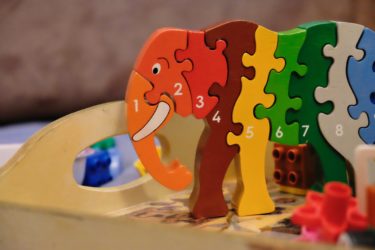By Françoise Lartigue, director of content; edited by Megan Okrand
We’ve been trying to follow a chore chart in my house. I resisted for a while, mostly because I liked the idea of being able to ask one of my children to do something and watch it happen.
Talk about a high level of parental satisfaction!
Except… that it only occasionally worked out that way. Mostly, I would forget to remember to ask them to do the things I needed until it was too late in the day.
So now we have a chore chart. It carefully lays out who is responsible for what. And I am doing a pretty good job at remembering to tell my kids to “check the chart”.
It turns out the fact that things are getting done ALSO brings me a high level of parental satisfaction.
Laundry debate? Nope, math moment!
This past week, the twins were responsible for folding the laundry. I like assigning both of them to one bigger chore since they’ll either turn it into a friendly competition or a game of some sort. And, most importantly, they complain less about the chore.
After about 10 minutes, I heard the boys talking in loud voices.

“I definitely folded more!” one gloated.
“No way,” exclaimed the other. “I am a laundry folding machine.”
It’s amazing what 10-year-old kids will compete over!
Before things boiled from friendly to furious (as they sometimes did), I intervened with a question: “How do you think you can tell who folded the most?”
After a brief conversation about ways to compare the laundry, they decided that weight would be our measuring strategy. We would weigh each basket on our scale to decide the winner.
Basket 1 was placed on the scale. 10.2 pounds. A presumptive victory dance ensued from one boy.
Then Basket 2 was placed on the scale. 12.5 pounds. Yelps of “Oh yeah, I am a laundry folding machine!!” were heard.
At this point, everyone was laughing, and even our dog was jumping around. “How many pounds of laundry did you fold all together?,” I asked. They paused for a minute before saying in unison “22.7 pounds!” and to which they announced in a state of awe, “That is A LOT of laundry!”
“I frequently say the same thing,” I told them.
Family math activities: compare, count, share, sort
This is just to show that family math activities can happen just about anytime and anywhere! And as educators, we see these opportunities everywhere. We can also pass this skill along to our families.
When we help families see that if there is something to be compared, weighed, measured, counted, shared or sorted, they can make it a math moment. If there is a shape or pattern to be noticed — they can make it a math moment. Family math activities can be anywhere.
Just developing this practice of recognizing math moment opportunities empowers parents and caregivers to not only notice but also build on these instances. Our job is to help families get into this habit with math moments.
We’ve previously touched on a common reason why many of us don’t notice math moments — math anxiety. If you are feeling your own pulse racing at the idea of guiding families to take advantage of math moments, stop, breathe, and go read this post now!
Math moments matter, and they start with families
Why are math moments SO important? Math requires developing math language and habits of mind, as well as foundational skills and techniques. That means your students not only have to practice those math habits and skills to GET good at them, they have to practice to STAY good at them, too.
Math moments are the ways in which educators and families help students do both.
We know that families have a lot on their plates, so whatever we suggest has to be easy to do. In general, families appreciate low-lift, fun, and highly doable ways to support at-home learning.

School-age kids need to flex their math muscles regularly to practice and solidify what they’ve already been taught. For young learners, from infants and toddlers to pre-teens and teens, finding and engaging in math moments provides the exposure to early math concepts that are needed to support their growth and development. In general, families need low lift, fun and highly doable ways to make this all happen. The easiest way for families to make math happen at home is by incorporating math into their daily routines.
So the question is: How do we help families do this?
Everyday family math moments, from birth through high school
At ParentPowered, each of our family engagement programs includes activities and prompts dedicated to math moments. Specifically, we build parents and caregivers’ ability to connect with their children while engaging in family math activities. At all ages, and in a wide variety of mathematical concepts, we guide parents to help their students flex their math muscles.
Let’s dive into just a handful of the skills covered in our curriculum frameworks and explore fun yet simple ways families can weave them into everyday math moments at home.
Math moments in elementary and early childhood
Infants and Toddlers
The Counting Game: Count your child’s fingers and toes during diaper changes or playtime. Make it interactive by gently touching each finger or toe as you count, creating a playful connection between numbers and body parts. You can even encourage some bedtime math by counting sheep!
Shape Safari: Turn everyday outings into shape-spotting adventures. Whether you’re at the park or in the grocery store, point out and name shapes you come across. For instance, the wheels of a stroller or the rectangular shape of a cereal box.
Sorting Fun: Engage your child in sorting different types of fruits during snack preparation. Ask them to categorize apples, bananas, and oranges into distinct groups, reinforcing basic sorting skills.
Colorful Patterns: Create vibrant patterns using toys or household items. Arrange blocks in a color sequence or line up colorful cups in a repeating pattern. After all the fun, during clean up time, you can have a conversation about shapes, asking your young scholar what shapes they put back into their toy chest. This visual and tactile exploration lays the groundwork for grasping more complex patterns later on.
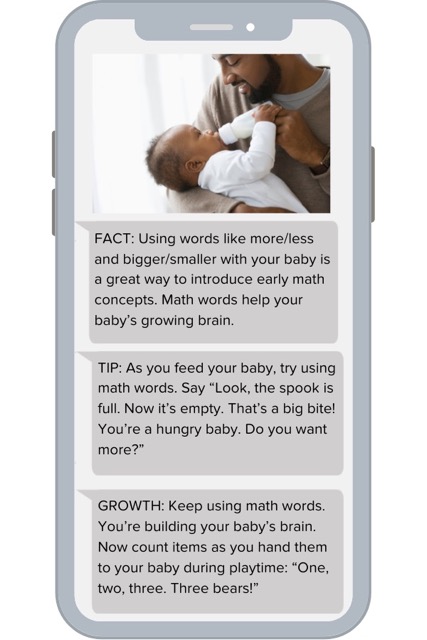
PreK
Counting Adventures: Turn daily routines into counting adventures! Whether it’s counting food during snack time or identifying numbered objects during a walk, these simple activities build a strong foundation in counting and cardinality.
Spatial Sense Quest: Explore the world of shapes and spatial relationships by arranging household items in various patterns or identifying shapes within your home environment. Transforming spatial awareness into a playful game makes learning geometry a joy.
Number Stories: Transform everyday objects into mini-number stories. For example, if your child has two toys and adds one more, you can create a simple number sentence (2 + 1 = 3) to introduce the concept of addition.
Bath-Time Math: Utilize bath time to investigate volume and quantity. Provide various containers of different sizes and encourage your child to pour water from one to another. These fun activities introduce the concept of volume in a playful and practical way.
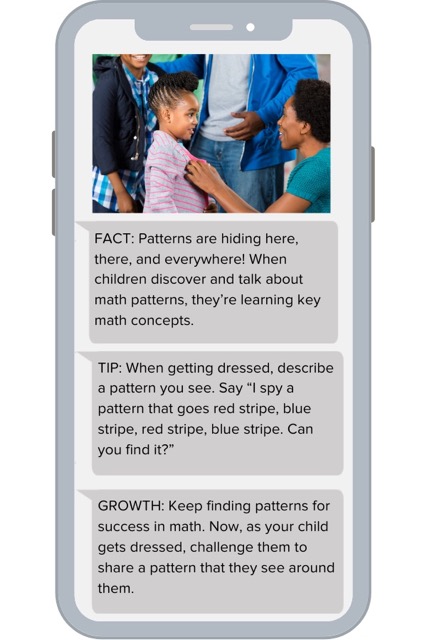
Scientific Reasoning Scavenger Hunt: Foster scientific reasoning through a scavenger hunt adventure. Encourage your little one to observe and categorize items based on simple scientific principles, nurturing a curiosity that extends beyond the realm of math.
Elementary School
Math Games with a Deck of Cards for Operations and Algebraic Thinking: Transform a simple deck of cards into a versatile tool for practicing addition, subtraction, multiplication, and division. These activities instill essential skills in operations and algebraic thinking.
Hands-On Materials for Measurement and Data: Utilize common and colorful materials to create a hands-on learning environment that introduces measurement concepts. From comparing sizes to exploring data through simple graphs, these activities lay the groundwork for measurement and data skills.
Baking Time Adventures for Practical Application: Turn baking sessions into opportunities for practical application of math skills. Measure ingredients precisely, discuss proportions, and introduce fundamental concepts related to measurement and data.
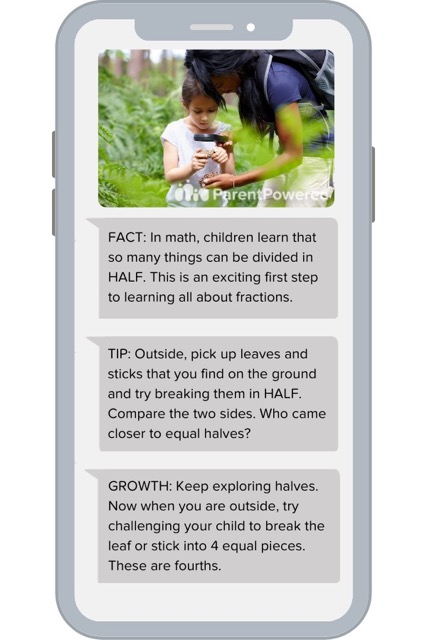
Board Games for Geometry: Infuse education into family game nights by selecting board games that subtly enhance geometric understanding. These games provide a playful way to grasp spatial relationships and problem-solving.
Cleanup Time Challenges for Critical Thinking: Transform cleanup into a collaborative project, incorporating critical thinking activities. Pose challenges that require problem-solving and strategic thinking such as organizing items by color or size, making cleanup an engaging and intellectually stimulating task.
Collaborative Projects for Geometry and Creative Expression: Participate in hands-on collaborative projects using white and colored paper, crayons, and markers. Create colorful paper plate octopuses, explore grid paper for geometric adventures, and discover the world of 3-D shapes through vibrant and colorful shape collages. These activities not only reinforce critical math skills but also nurture a love for learning within the whole family.
Math moments in adolescence
During middle school and high school, the nature of family involvement in math education evolves. It shifts from direct engagement with math content to fostering essential cognitive skills and practices. While it may involve spending less time on activities like playing, counting, and identifying shapes or patterns together, parents can still play a pivotal role in their child’s math success by dedicating time to reinforce problem-solving abilities, critical thinking, and reasoning skills through everyday activities and discussions.
Middle school
Reflect and Learn: When faced with a math problem, discuss it as a family. Celebrate incorrect answers as opportunities to learn and grow. Encourage everyone to share their thought processes and different problem-solving approaches.
Encourage Exploration: Provide access to math-related books, documentaries, or TED talks. Public libraries and local community centers often offer free access to resources like these for teens and families to enjoy. Discuss these as a family, highlighting the effort and perseverance of mathematicians and scientists.
Real-Life Math: Involve your child in everyday problem-solving activities like cooking or home improvement projects. Ask open-ended questions like, “How can we double this recipe?” or “What’s the best way to measure this?”
Overcoming Challenges: Share stories of your own challenges and how you overcame them. Normalize setbacks and reinforce that learning from mistakes is an integral part of growth.
Family Study Time: Set aside dedicated family study time, even if you’re working on different subjects. Create a quiet and organized space where everyone can focus on their tasks.
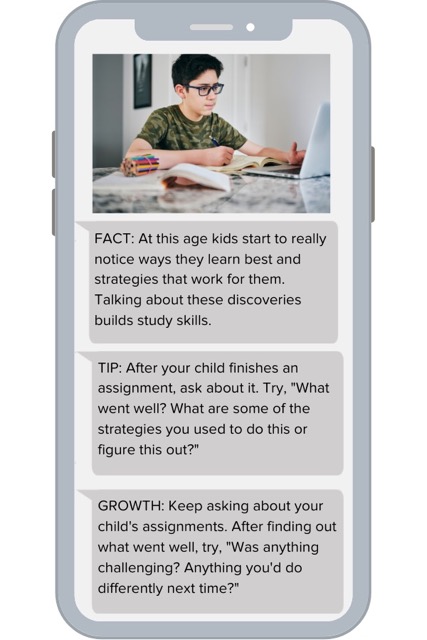
Puzzle Time: Work on jigsaw puzzles, Sudoku, or crosswords together. These activities are a fun way to enhance working memory, problem-solving, and reasoning skills.
Outdoor Sports and Games: Encourage your child to participate in outdoor sports and games like soccer, basketball, or even scavenger hunts. These activities require problem-solving, following instructions, teamwork, and strategic thinking, helping middle schoolers develop crucial skills while having fun.
High school
Meal Planning: Involve your high schooler in planning family meals. Discuss portion sizes, fractions (half, quarter), and budgeting for groceries. This activity enhances their planning and goal-setting skills.
Study Planner Collaboration: Sit down together to create a study schedule. Help your child set realistic goals and allocate time for each subject.
Study Groups: Encourage your high schooler to participate in math study groups with peers. This fosters metacognition by reflecting on learning strategies, self-regulation through effective study habits, as well as collaboration and communication skills.
Everyday Deduction: Encourage your child to question assumptions in daily life. For instance, discuss the reasoning behind everyday decisions, like choosing the quickest route on a map or comparing prices while shopping.
Budgeting and Financial Planning: Involve your high school student in family budgeting discussions. This activity promotes financial literacy and requires budget planning and metacognition. Discuss how to allocate funds for various expenses, prioritize spending, and save
Video Game Strategy: If your teen enjoys video games, involve your high schooler in games that require strategic planning. Discuss details about the video games they’ve played, including in-game currency, resource management, and optimal routes. This not only provides a fun activity but also enhances their reasoning skills.
Unlock the power of everyday family math activities
The magic happens when we transform ordinary moments into extraordinary learning opportunities, making everyday life a part of every family’s math adventure. By bringing these math learning moments into your daily routines at home, we not only diminish math anxiety but also foster a positive, “I can do it!” mindset. We know you, and your families, have got this.
Join a ParentPowered info session to learn more about how our evidence-based family engagement programs seamlessly weave standards-aligned learning moments into the fabric of family life, using family math activities and much more.
About the author
Françoise Lartigue is the Director of Content at ParentPowered. She began her career teaching kindergarten in the South Bronx through Teach for America, and has ten years of experience working in both the public and private sector. Most recently, she worked with the Flying Cloud Institute to design and implement STEM and STEAM based units for elementary classrooms. Francoise has a Master’s Degree in Early Childhood Education from Bank Street College.









